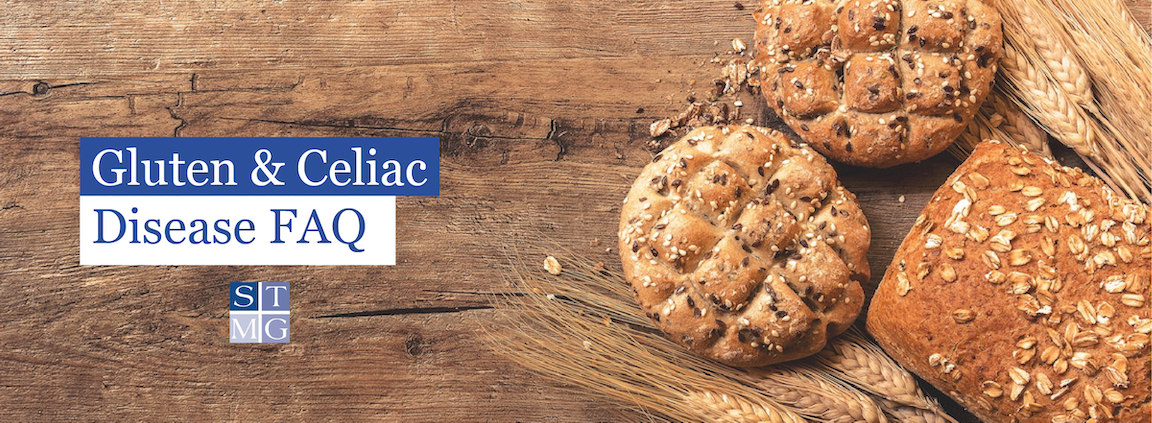To Vape or Not to Vape?
/in Uncategorized/by Nicole ClawsonVaping has taken the U.S. by storm, rapidly eating into the tobacco market while implying a “safer” or “healthier” alternative to cigarettes. For those unfamiliar, “vaping” refers to the act of inhaling and exhaling an aerosol along with flavoring and various chemicals (typically nicotine). Vaporizers (or “vapes,” vaping devices) come in many different forms; many are rechargeable, refillable electronic devices. A wide range of flavors are available for every palate. Many popular flavors, such as cotton candy or fruit medley, are enticing to younger audiences.
Is Vaping “Better” Than Smoking Cigarettes?
Many vape manufacturers would have you believe vaping is a healthier alternative to smoking cigarettes. As Johns Hopkins Medicine points out, regular tobacco cigarettes contain approximately 7,000 chemicals (many of which are toxic), while e-cigarettes contain far fewer toxic chemicals. Though the toxicity may be lower, not enough research has been done to know precisely what chemicals (or levels) are present in vape devices.
At the very least, e-cigarettes and traditional cigarettes always contain one highly addictive and toxic chemical: nicotine. Nicotine can increase blood pressure, cause an adrenaline spike, and elevate heart rate, thereby increasing risk for heart attack. Of course, nothing about device or delivery mechanism changes the addictive nature of nicotine.
Perhaps worst of all, vaping is introducing a new generation to nicotine by the millions. Let’s take a closer look at the connection between vaping and teenagers…
Vaping & Teens
The National Institute of Drug Abuse reports some key statistics in its Teens and E-Cigarettes report:
- 30.7 percent of teen e-cigarette users will start smoking within six months, compared to just 8.1 percent of non-users.
- Seven in ten teenagers are exposed to e-cigarette ads.
- A shocking number of users don’t know what’s in their e-cigarette, due in part to the fact that manufacturers don’t have to disclose their ingredients. Only 13.2 percent of teen users say nicotine is in their device, while 13.7 percent say they don’t know, and 66 percent say “just flavoring.”
According to the American Heart Association, vaping use doubled among high school students from 2017 to 2018. It’s no wonder that on December 18, 2018, Surgeon General Jerome Adams declared vaping among youth an epidemic in the United States.
The Health Risks of Vaping
Vaping isn’t just risky for teenagers, who may use it as an entry point for years of tobacco abuse. Vaping has a few health risks of its own. For example, did you know that vaping can irritate cells in the gums, mouth, and throat? Or that many vaping liquids contain chemicals harmful to the lungs, including diacetyl, 2, 3-pentanedione, and acetoin, according to a 2016 study that analyzed 51 types of flavored e-cigarettes? (As an interesting aside, this study notes there are more than 7,000 e-cigarette flavors on the market… and that was over three years ago.)
Vaping: Not Safe or Harmless
It’s possible that vaping may be a marginally better alternative for adults addicted to nicotine. However, vaping is not safe or harmless, nor should it be recommended as a smoking cessation tool.
The question the medical community should ask is, “Just how harmful might vaping be?” More research is needed to understand the chemical relationships involved in e-cigarette devices. In the meantime, their use is not recommended.
You Can Quit! We Can Help!
If you desire to quit smoking, talk to your doctor at St. Thomas Medical Group in Nashville about the many safe and approved cessation therapies that may be available. Change is possible. Call +1 (615) 297-2700 or schedule your appointment with a provider online.
Breath Easy Again With Septorhinoplasty or a Balloon Sinuplasty
/in Uncategorized/by Nicole ClawsonFor millions of people, chronic sinusitis is a constant irritant: stuffy nose, difficulty breathing, and swelling and tenderness around the eyes. Chronic sinusitis can interfere with overall quality of life for weeks, months, or even years on end. Medication therapies like nasal corticosteroids and saline nasal irrigation may help some patients. For many, however, surgery may be the best option.
At St. Thomas Medical Group, ear nose and throat (ENT) specialists in Nashville offer several procedures for treating chronic sinusitis. Two of these procedures are known as balloon sinuplasty and septorhinoplasty.
What Is Balloon Sinuplasty?
Balloon sinuplasty – you may also hear it referred to as “BSP” – is a minimally invasive procedure that may provide sinus pain relief to individuals with chronic sinusitis. It’s an in-office procedure that involves no cutting of any tissues or bone. Hundreds of thousands of people have undergone this procedure and enjoyed the fast-acting, long-lasting results.
How Does BSP Work?
During a balloon sinuplasty procedure, your ENT doctor will insert a small balloon catheter through the nasal passageways to reach the inflamed sinus. The balloon is inflated and saline is sprayed through the catheter in order to flush out mucus and infection. Once the sinus is cleared, the balloon is removed and the sinuses remain open. Additionally, use of the balloon helps widen the walls of the sinus passageway.
Again, this procedure is done in-office; local anesthesia is all that’s necessary for this procedure. The majority of patients who undergo BSP are back to work and normal activities in just two days. In a study of 203 patients who underwent the procedure, more than 82% said the procedure was “tolerable” or “highly tolerable.”
What Is Septorhinoplasty?
Septorhinoplasty is a surgical procedure during which any internal obstructions blocking the nasal passageway are surgically removed. Additionally, the appearance of the nose may be improved during this procedure.
The surgery combines two common procedures: septoplasty and rhinoplasty.
- Septoplasty: During this procedure, an ENT specialist sets the septum straight. The septum is the bone and cartilage that separates the two nostrils and nasal cavities. “Deviation” of the septum is a common reason for having septoplasty.
Rhinoplasty: In rhinoplasty, surgeons change the shape of the nose in order to alter physical appearance or improve breathing. Unlike many forms of cosmetic or plastic surgery, rhinoplasty may be covered fully or in part by insurance. - Septorhinoplasty is commonly used to obtain a desired nose shape and size while also improving a person’s ability to breathe clearly.
How Does Septorhinoplasty Work?
During the procedure, which is performed under general anesthesia, the surgeon removes parts of cartilage and bone in order to create the desired shape. The septum is broken and straightened in order to improve breathing and reduce symptoms associated with chronic sinusitis.
Recovery from septorhinoplasty may take between one and two weeks. It can take several months for the final appearance of the nose to take shape.
Do I Have Chronic Sinusitis?
While only a doctor can diagnose chronic sinusitis, individuals with this condition may experience symptoms such as inflammation of the nasal passageways, difficulty breathing, pain or tenderness around the sinus cavities, reduced smell and taste sensation, drainage, and abnormal mucus discharge. If you experience some of these symptoms, talk to your doctor at St. Thomas Medical Group about what options may be available to you.
Schedule An Appointment at the Nashville ENT & Allergy Clinic
Have questions for an ENT specialist in our Nashville offices? For more information or to schedule an appointment, call +1 (615) 383-9089 or visit the Nashville ENT & Allergy Clinic online. You, too, may be breathing easy again… call today to learn about your options!
FAQ: Your Gluten and Celiac Disease Questions Answered!
/in Uncategorized/by Nicole ClawsonWhen it comes to gluten and celiac disease, many people have more questions than answers. Between fad diets, online supplements, and health claims that run the gamut from too-good-to-be-true to downright scary… how’s a person to know what to believe?
In an effort to better serve you, our patients, the gastroenterologists at Nashville’s St. Thomas Medical Group have put together this FAQ list covering the basics of celiac disease and gluten.
What is gluten?
Gluten is a protein found in wheat and many grains, including rye and barley. Gluten is what gives dough its sticky texture. While most common in wheat, rye and barley, gluten is also present in many foods that you wouldn’t expect due to food processing techniques. Even whole (non-gluten) foods, such as oats, may contain enough gluten to trigger symptoms. This can occur from contact in growing fields or processing plants.
What is celiac disease?
Celiac disease is an autoimmune disease and genetic disorder that is triggered by gluten. In patients with celiac disease, the ingestion of gluten triggers an autoimmune response in the body’s digestive system, resulting in the destruction of villi, tiny finger-like projections within the small intestine. Villi increase surface area inside the small intestine, making it easier for the body to properly absorb food. Fortunately, the interior lining of the small intestine renews itself every few days, so the damage caused by celiac disease is not permanent.
Remember, it’s important to recognize celiac disease for what it is: an autoimmune disease. Celiac disease isn’t a food allergy or dietary choice.
How common is celiac disease?
The Center for Celiac Research and Treatment reports that one out of every 133 people in the United States are affected by celiac disease.
What are the symptoms of celiac disease?
Symptoms of celiac disease may include constipation, diarrhea, abdominal pain, weight loss, fatigue, and more. Altogether, there are approximately 300 known symptoms of celiac disease. Many symptoms are “extra-intestinal,” which is to say they occur in body systems beyond the digestive system. Some patients may experience arthritis, joint pain, dementia, and other symptoms. That being said… some individuals with celiac disease experience no symptoms at all.
How is celiac disease diagnosed?
The initial screening for celiac disease can be done with a simple blood test, which detects specific antibodies. If the blood test indicates the possibility of celiac disease, then your gastrointestinal specialist may order an intestinal biopsy. Biopsy is the only way to make an official diagnosis.
How is celiac disease treated?
While there is no cure for celiac disease, the goods news is that affected individuals can lead normal, healthy lives by following a gluten-free diet.
What can I eat if I have celiac disease? What foods should I avoid?
Individuals with celiac disease can eat any foods that do not contain gluten. Avoid any foods that contain wheat or wheat-derived flour. This includes bread, pasta, and cereals, as well as foods you might not expect to contain gluten: canned soup, ketchup and mustard, processed meats, ice cream, and yogurt. (Due to increased awareness of celiac disease, gluten-free options are now available for nearly every food.)
Is celiac disease a major health concern? Is it dangerous?
Yes, biopsy-diagnosed celiac disease is a major health concern. Left untreated, the effects can be life-threatening. Untreated celiac disease may increase risk for cancer, osteoporosis, pancreatic disease, malabsorption, hemorrhaging, and other serious health issues.
If you have celiac disease, talk to your doctor or gastrointestinal specialist about following a proper gluten-free diet.
Schedule An Appointment With a GI Specialist
For more information, visit the St. Thomas Medical Group Endoscopy Center (phone +1 (615) 301-7040) or Nashville Gastrointestinal Specialists (phone +1 (615) 383-0165).




